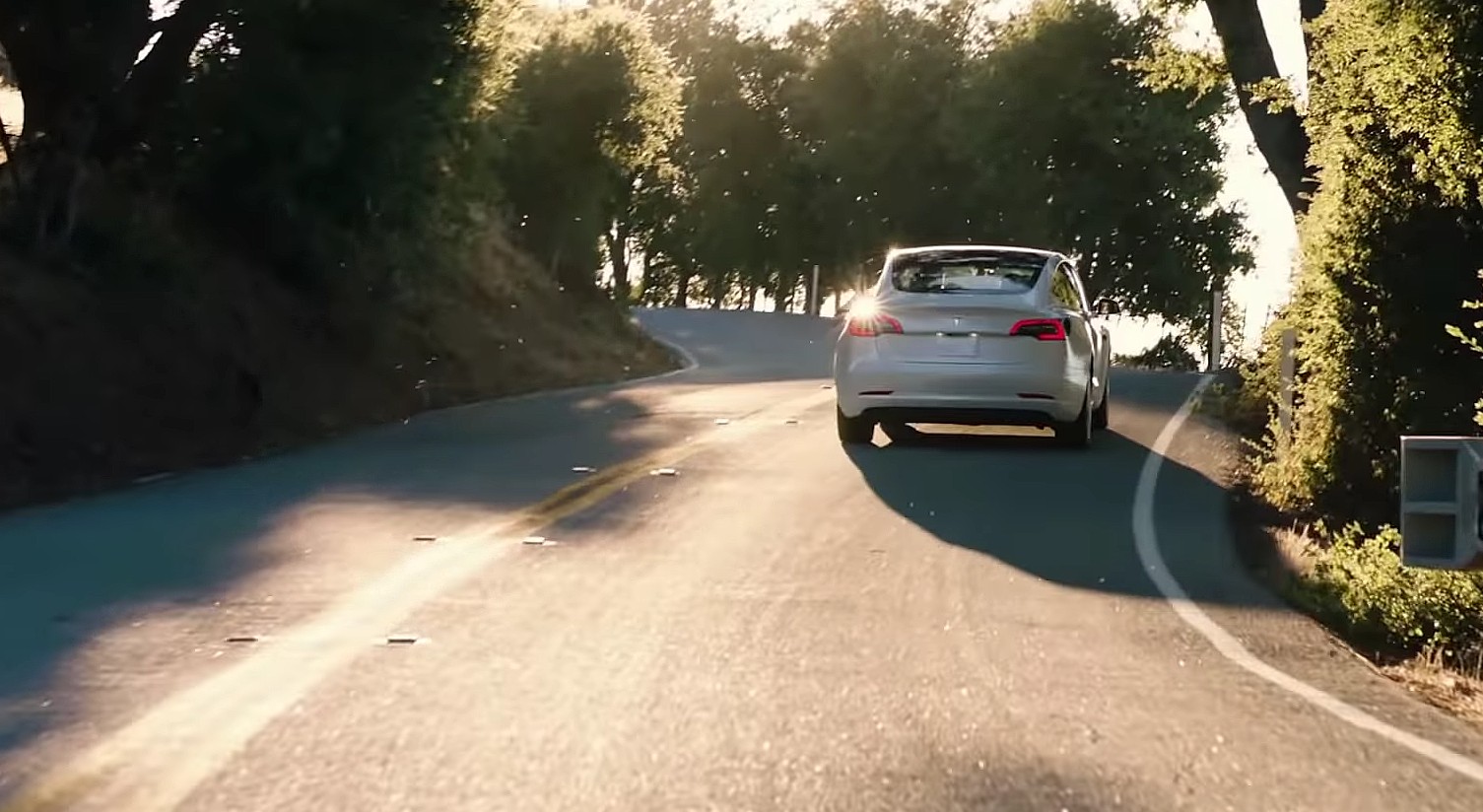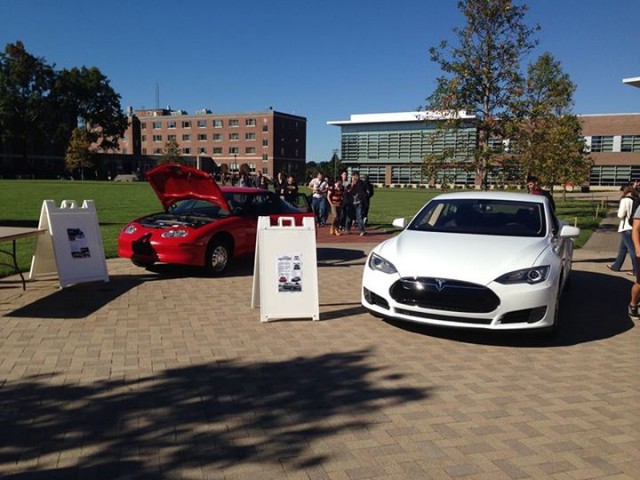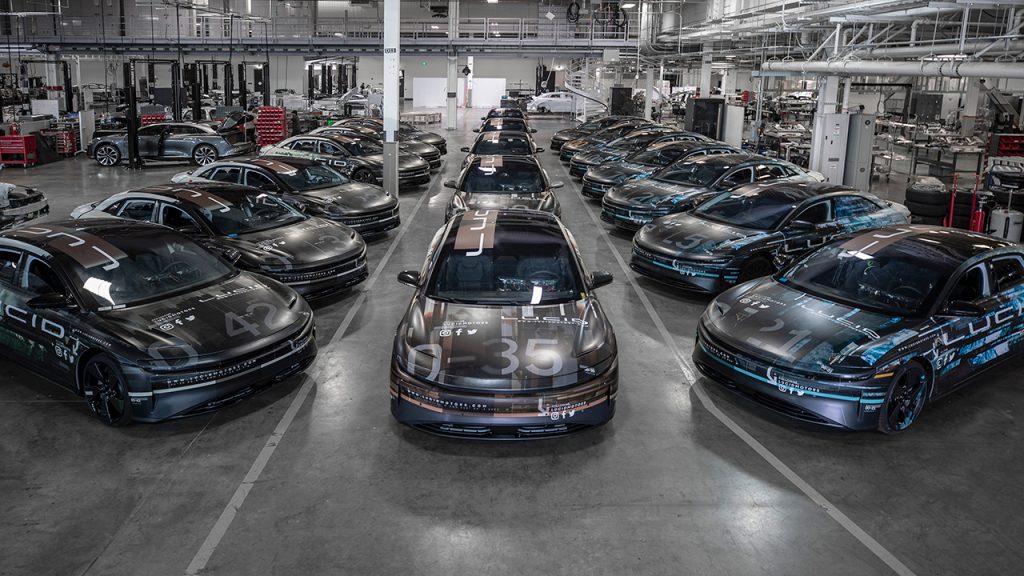

News
Tesla and EV-only carmakers are legacy auto’s karma for killing the electric car
Karma could be a cruel mistress. It has a tendency to sneak up from behind before delivering a cruel haymaker to the jaw. Karma takes a while to rev up sometimes, but when it comes, things change, and sometimes these changes can be painful. Considering the state of the auto market, as well as the momentum carried by companies like Tesla, Lucid Motors, and Rivian, it appears that legacy carmakers are finally dealing with some well-deserved karma — for killing the electric car.
The general death of EVs amidst the emergence of the internal combustion engine during the early days of automobiles is understandable. Back then, fossil fuels presented a cheap, efficient way to travel, with vehicles like the Baker Electric and the Porsche P1 taking a very long time to charge. However, the death of the electric car that happened in the late 90s was something that is far more difficult to justify.
During the mid-90s, a modern electric vehicle was created by General Motors, and it could have been the driving force of a change in the motoring world. The vehicle, dubbed the EV1, was on the bleeding edge of tech at the time, with its three-phase alternating current induction motor and lead-acid (later changed to NiMH) battery. It had enough range for inner-city travel, it was fast, and it was sleek. But inasmuch as it was beloved by those who leased it, the EV1 was fated to meet an unfortunate demise.

In a series of events that inspired the creation of the documentary “Who Killed the Electric Car,” General Motors decided to discontinue the EV1, reclaiming the car from the leasees and destroying the vehicles. Segments of the acclaimed documentary depicted customers asking GM if they could just purchase the all-electric car, with some even holding demonstrations for the EV. But despite all these efforts, GM let the EV1 die, and most, save for a few, were unceremoniously crushed.
There were many speculations surrounding the EV1’s demise. General Motors insisted that the vehicle was not commercially viable. But the trend of large, gas-guzzling SUVs that followed the EV1 in GM’s lineup contributed to rumors that the electric car was killed because it represented a potential threat to the fossil fuel industry. In a sense, the electric car did die a painful, crushing death in the 90s, and it was not until Tesla came to the picture that EVs emerged as viable alternatives to gas-powered cars once more.
And it’s not like there was no resistance to the emergence of electric cars like Tesla, either. Tesla faced and continues to face strong opposition, and if it weren’t for its dedicated team and Elon Musk’s own stubbornness and resilience, the company could have followed the same fate as the EV1. But with vehicles like the Model S changing the game and cars like the Model 3 disrupting vehicle classes that used to be dominated by the internal combustion engine, it eventually became evident that this time around, it will be far more difficult to kill the electric car.

Amidst the success of companies like Tesla, even legacy automakers are playing catch up. Vehicles like the Jaguar I-PACE and the Chevy Bolt EV are representations of this. But even with these efforts, the pace of innovation in the electric vehicle segment is fast. Companies like Tesla work like tech companies, failing fast and failing forward. And now, legacy auto does not only have Tesla to contend with. Other premier electric cars from companies that are EV-only are coming. Tesla may have put EVs back on the map, but now, more companies are joining the fray.
There’s Lucid Motors with the Air, a hyper-luxury sedan that would likely put the Mercedes S-Class in its place. There’s the Rivian R1T and R1S, which bring luxury and comfort even in places off the beaten path. Even Bollinger Motors is attacking a small niche of rock-crawling vehicles with its no-nonsense, rough-and-tough B1 and B2. These are only the tip of the iceberg as well. Veteran auto is even getting increasingly dedicated to EVs, as evidenced by Porsche’s decision to revamp its entire factory in Zuffenhausen just to get the company ready for more electric vehicles like the Taycan.
It appears that this time around, killing the electric car will not be as simple or easy as before. Unlike the early 1900s, EVs now charge fast and they go the distance, and unlike the 90s, electric cars are now being embraced by mainstream consumers. There’s a demand for them, and EVs are now being noted for their performance. Electric cars are here to stay, and every single one that gets released is additional karma to an auto industry that appears to have dug itself far too deep into fossil fuels.
News
Tesla Robotaxi has already surpassed Waymo in this key metric
Tesla Robotaxi has already overtaken Waymo in Austin in one key metric, but there’s still more work to do.

Tesla Robotaxi has already surpassed Waymo in one extremely important key metric: size of service area.
Tesla just expanded its service area in Austin on Monday morning, pushing the boundaries of its Robotaxi fleet in an interesting fashion with new capabilities to the north. Yes, we know what it looks like:
🚨 Tesla’s new Robotaxi geofence is…
Finish the sentence 🥸 pic.twitter.com/3bjhMqsRm5
— TESLARATI (@Teslarati) July 14, 2025
The expansion doubled Tesla Robotaxi’s potential travel locations, which now include the University of Texas at Austin, a school with over 53,000 students.
The doubling of the service area by Tesla has already made its travel area larger than Waymo’s, which launched driverless rides in October 2024. It became available to the public in March 2025.
According to Grok, the AI agent on X, Tesla Robotaxi’s current service area spans 42 square miles, which is five square miles larger than Waymo’s service area of 37 square miles.
Tesla Robotaxi (red) vs. Waymo geofence in Austin.
Much can be said about the shape… but the Robotaxi area is now ~3.9 mi² (10 km²) larger than Waymo’s!! pic.twitter.com/dVfh2ODxJC
— Robin (@xdNiBoR) July 14, 2025
The service area is one of the most important metrics in determining how much progress a self-driving ride-hailing service is making. Safety is the priority of any company operating a ride-hailing network, especially ones that are making it a point to use autonomy to deploy it.
However, these companies are essentially racing for a larger piece of the city or cities they are in. Waymo has expanded to several different regions around the United States, including Arizona and Los Angeles.
Tesla is attempting to do the same in the coming months as it has already filed paperwork in both California and Arizona to deploy its Robotaxi fleet in states across the U.S.
As the platform continues to show more prowess and accuracy in its operation, Tesla will begin to expand to new areas, eventually aiming for a global rollout of its self-driving service.
News
Tesla Megapacks arrive for massive battery replacing coal plant
Tesla Megapacks have started arriving on-site to the Stanwell Battery Project, just as Queensland prepares to wind down the Stanwell coal plant.

The first of over 300 Tesla Megapacks have arrived to the site of a massive battery energy storage system (BESS) being built in Australia, dubbed the Stanwell Battery Project after a coal plant it’s set to replace.
In a press release last week, the Stanwell Battery Project announced that the first Tesla Megapack 2XL units had arrived to the site, which is located outside of Rockhampton in Queensland, Australia. The project will eventually feature 324 Megapack units, set to arrive in the coming months, in order to support the 300MW/1,200MWh battery project.
“The Stanwell Battery is part of the diversification of our portfolio, to include cleaner and more flexible energy solutions,” said Angie Zahra, Stanwell Central Generation General Manager. “It is just one part of the 800 MW of battery energy storage capacity we have in our pipeline.
“Capable of discharging 300 MW of energy for up to four hours (1,200 MWh), our mega battery will be one of the largest in Queensland.”

Credit: Stanwell
Did you know Tesla’s Lathrop facility churns out a Megapack every 68 minutes? That’s enough energy to power 3,600 homes for an hour per unit! ⚡️ pic.twitter.com/bG6fpHkB9O
— TESLARATI (@Teslarati) June 11, 2025
READ MORE ON TESLA MEGAPACKS: Tesla Lathrop Megafactory celebrates massive Megapack battery milestone
The state is working with government-owned company Yurika to facilitate construction, and the process is expected to create roughly 80 jobs. The project is expected to come fully online in May 2027, with initial commissioning of the Megapacks aiming for November 2025.
The Stanwell Battery is set to replace the nearby Stanwell coal generation plant, which the government is planning to wind down starting in 2026 as part of efforts to reach an 80 percent renewable energy generation ratio by 2035. Meanwhile, the government is also set to begin winding down the Tarong and Callide coal plants, while several other Megapack projects are being built or coming online. o ya
Tesla currently has two Megapack production facilities, located in Lathrop, California, in the U.S. and another that came online earlier this year in Shanghai, China. The Shanghai Megafactory shipped its first units to Australia in March, while both factories are expected to be capable of producing 10,000 Megapack units per year upon reaching volume production.
News
The Tesla Diner is basically finished—here’s what it looks like
The company first broke ground on the Diner, Drive-in, and Supercharger location in September 2023. Now, it has served one of its first internal customers.

Tesla has finally completed the construction of its highly anticipated Diner, Drive-in, and Supercharger in Los Angeles, and recent photos of the interior’s “retro-futuristic” style are making their way around the internet.
X user Brad Goldberg shared photos from the Tesla Diner site last Tuesday, depicting some of the Supercharger stalls, indoor and outdoor seating areas, multiple neon lights, and even an Optimus robot. Goldberg also noted that there had been a “flurry of activity on site” while he was snapping the photos last week, suggesting that the restaurant location could be getting close to opening.
The Tesla Diner also served one of its first internal customers in the past few days, as Elon Musk posted on X on early Monday morning that he had just finished up eating a meal at the site:
I just had dinner at the retro-futuristic Tesla diner and Supercharger.
Team did great work making it one of the coolest spots in LA!
The photos also show that the site is pretty much done, with some of them even showing vehicles charging at the charging stalls.
You can see some of the latest photos of the Tesla Diner below.

Credit: BradGoldbergMD | X

Credit: BradGoldbergMD | X

Credit: BradGoldbergMD | X

Credit: BradGoldbergMD | X

Credit: TeslaKing420 | X

Credit: TeslaKing420 | X

Credit: Brad Goldberg (via Sawyer Merritt on X)

Credit: Brad Goldberg (via Sawyer Merritt on X)

Credit: Brad Goldberg (via Sawyer Merritt on X)

Credit: Brad Goldberg (via Sawyer Merritt on X)

Credit: Brad Goldberg (via Sawyer Merritt on X)
READ MORE ON TESLA’S LA DINER: Tesla readies Drive-In Diner Supercharger for launch with app inclusion
When will the Tesla Diner open to external customers?
While it’s still not open to external customers yet, the news again suggests that the company could be close to an official opening date. Tesla first broke ground on the Diner in September 2023, after receiving a wave of building permit approvals throughout that year. Teslarati also covered much of the construction progress throughout last year, including when crews installed the first and second drive-in screens.
Located at 7001 West Santa Monica Boulevard, the idea was first discussed in 2018 by Musk and a few others on Twitter, featuring 1950s rock and roll, waiters on roller skates, and drive-in movie theater screens playing clips from some of history’s best movies. Notably, the photos of the front doors also show that the site will be open 24 hours a day, 7 days a week, whenever it does end up opening.
Tesla’s progress on Supercharger with diner, drive-in seen in aerial footage
-

 Elon Musk2 weeks ago
Elon Musk2 weeks agoTesla investors will be shocked by Jim Cramer’s latest assessment
-

 News2 days ago
News2 days agoTesla debuts hands-free Grok AI with update 2025.26: What you need to know
-

 Elon Musk4 days ago
Elon Musk4 days agoxAI launches Grok 4 with new $300/month SuperGrok Heavy subscription
-

 Elon Musk7 days ago
Elon Musk7 days agoElon Musk confirms Grok 4 launch on July 9 with livestream event
-

 News2 weeks ago
News2 weeks agoTesla Model 3 ranks as the safest new car in Europe for 2025, per Euro NCAP tests
-

 Elon Musk2 weeks ago
Elon Musk2 weeks agoxAI’s Memphis data center receives air permit despite community criticism
-

 News4 days ago
News4 days agoTesla begins Robotaxi certification push in Arizona: report
-

 Elon Musk2 weeks ago
Elon Musk2 weeks agoTesla scrambles after Musk sidekick exit, CEO takes over sales














